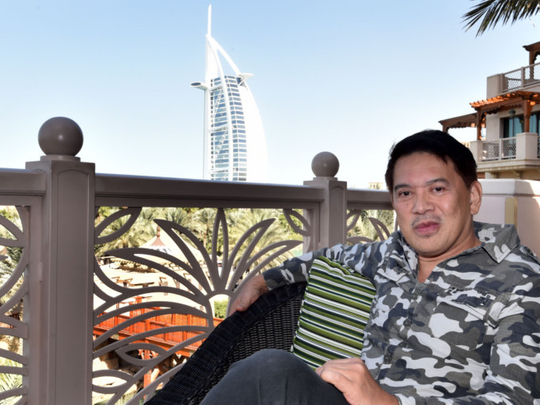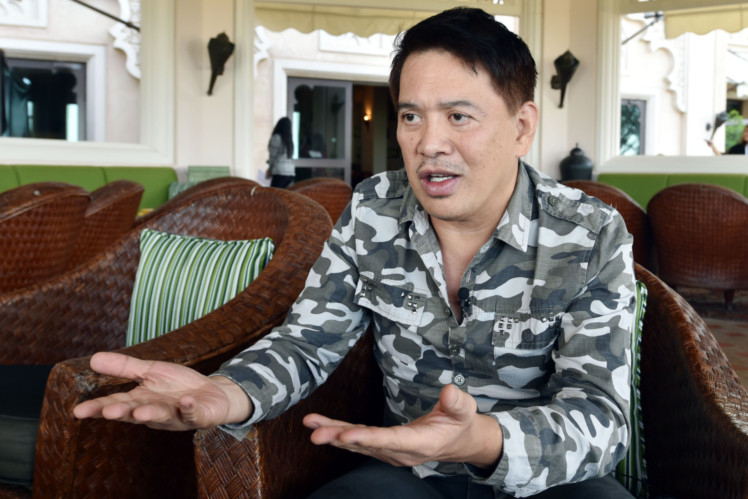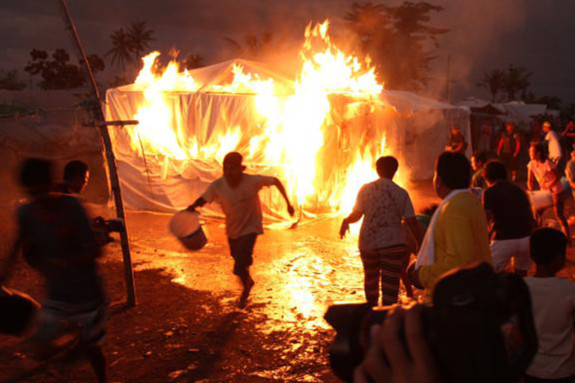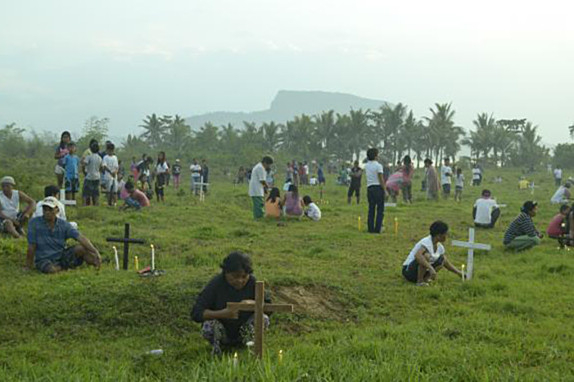
Award-winning Filipino filmmaker Brillante Mendoza is back in Dubai with a new indie film that brings back haunting memories of one of the most tragic episodes in recent memory. Trap (Taklub), which is currently screening at the Dubai International Film Festival (Diff), tells the story of the survivors of the super typhoon Haiyan (Yolanda), which devastated central Philippines in 2013, and how they picked up their lives in the aftermath of such unprecedented calamity. The movie is led by award-winning actress Nora Aunor, with other veteran Filipino actors such as Julio Diaz and Lou Veloso.
After the monstrous typhoon struck the Philippines, Mendoza was tapped by the Department of Environment and Natural Resources (DENR) to create a documentary film about climate change. For the movie to have a stronger impact on audiences, Mendoza suggested to make a narrative film instead. Mendoza says that although it is a government-funded project, he wasn’t going to compromise on his vision for the film.
“I think it’s also about my reputation and about my films that I’m making,” Mendoza tells tabloid!. “They also know my filmography and I think it’s clear with everyone that even if I’m going to make a film about a government-funded project, it will still be about the truth. It will be still be really about what people are really experiencing.
“I’ve had that reputation with my films. There were films of mine that were not shown commercially because they received an X-rating from the censors. I didn’t mind that because I’d rather have my film shown in a very limited screening or in a special screening rather than having it cut. That is also my advocacy. I have my own advocacy and my advocacy is about telling the truth in my films. Telling what is really happening in film. I think we were quite clear on that.”
Mendoza says there were no hesitations when he was offered the project.
“What was clear from the very start is that we are doing a film about climate change or risk reduction. But at the same time I want to tell the story not in a propaganda way, but more like telling the stories of the people,” says Mendoza. “You talk about climate change and risk reduction in a subtle way and I am more believing in that, rather than being pushy and preachy about the whole project. And I think its effective in a way because people don’t want to be told what to do, especially Filipinos.”
“You just have to tell them what is good and what is bad. And I think it is quite clear on the film that we did not preach, we just showed them that this is the harm that it can do to you, if you do this and if you do that. And some people are hardheaded, they wouldn’t listen and that’s real life. I think one way or the other we can see ourselves in that film. You can see the bad side and the good side.”
In doing his films, Mendoza compares himself to a journalist. “As a filmmaker, I’d like to be like a journalist, where you balance everything. You don’t preach, you don’t take sides. You let the people decide. At the end of the day, when they watch your film they will see that you are not telling them what to do.”
Although he had access to government funding, Trap had to struggle with budget problems just as most independent films do.
“Of course, to be realistic about it, as an independent filmmaker the fund and the budget is always a big challenge,” he says. “So how you put all your resources together to come up with the film and finish the film is really a big challenge. I’m used to it. I’ve done 12 films with very limited funds and I was able to put everything together. That’s the realistic and practical side.”
Filming in Tacloban, where memories of the devastation remain fresh in the minds of people who continue to endure the wrath of strong typhoons year after year, also has challenges. “The other challenge is dealing with this story. Dealing with the real people from Tacloban. It’s quite sensitive in a way because they are real victims and survivors of this disaster,” he says. “You know these people have gone through so much loss and pain, so its not easy dealing with them. But at the same time I’d like to think of it as a therapy in a way because it could help them somehow move on with their lives.”
“There were times that it was quite emotional because they played [the role of victims] themselves. It’s not easy also for us, but one thing that is very clear with everyone, with all the production [staff], is that we don’t want to exploit them. We don’t want to exploit their emotions and their situation. For us, we went there as a filmmaker, as a story teller. We are doing this project also for them. It is not just for us. At the end, it doesn’t just come out as a film about climate change or people trying to move one. But more like a tribute to the survivors of Haiyan.”
Mendoza reveals to tabloid! his favourite scene in the movie. “The one scene that I like is the scene where Nora Aunor and Julio Diaz are talking [across] a table and Nora Aunor says that just because she survived doesn’t mean she is favoured. It’s like in real life, sometimes other people suffer and we feel we are more blessed or privileged, but of course we also have our own [sufferings to deal with]. And that’s what I also like to remind the audience. We have our own sufferings inside.”
Trap was screened in the Un Certain Regard section at the 2015 Cannes Film Festival and won a commendation from the Ecumenical Jury. The movie also received positive response from different international film festivals. However, Mendoza, who received the Best Film award for his movie Lola at the 2009 Dubai International Film Festival, says winning awards is not his ultimate goal. “Awards are validation of our work, but they shouldn’t be the ultimate goal. Of course I’m proud that my films are being recognised. But I think first and foremost, you are making the film not for the awards, you are making film because you want to tell a story — a truthful story.”
















